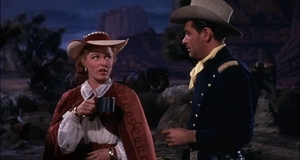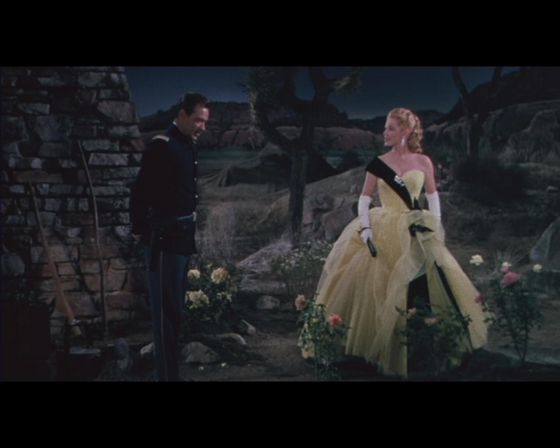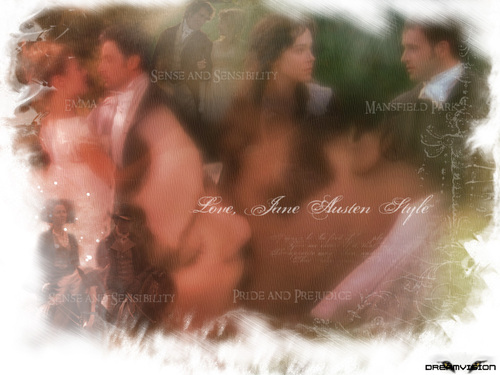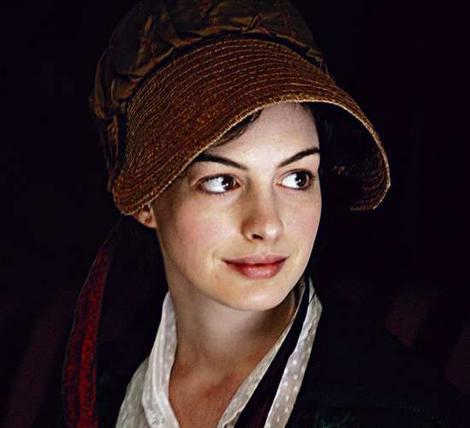"ESCAPE FROM FORT BRAVO" (1953) Review
Years ago, I used to watch a great deal of old film on late night television. My two favorit channels that offered these film were Turner Network televisi (TNT) and the American film Classic (AMC), which used to air film without any commercial breaks. On TNT, I had stumbled across a Western movie originally released oleh MGM Studios in 1953 called "ESCAPE FROM FORT BRAVO" (1953) and fell in cinta with it. After watching my recently purchased DVD copy of the movie, I could see why it became a favorit of mine.
Directed oleh John Sturges during the first decade of his directorial career, "ESCAPE FROM FORT BRAVO" told the story of a Union Army officer that served as the second-in-command of a prisoner-of-war camp located in the Arizona Territory in 1863. The movie’s opening pretty much set the stage of what kind of character Captain Roper was, as it depicted him dragging an escaped Confederate prisoner back to Fort Bravo. The fact that Roper was on horseback and his prisoner – a Lieutenant Bailey – was on foot pretty much established the Union officer as a hard-nosed and ruthless man. That flint-like personality was exacerbated oleh his cynicism, revealed in his reactions to the other characters’ disapproval of his treatment of Bailey. However, chaos soon arrived in the form of one Carla Forrester, a Texas belle who arrived at Fort Bravo to serve as maid-of-honor at the wedding of Alice Owens, the daughter of Fort Bravo’s commanding officer, Colonel Owens. Carla was also there to ensure the escape of the prisoners’ ranking officer, her fiancé Captain John Marsh and a few of his men. In order to keep their Union jailers distracted, Carla set out to seduce and romance the fort’s most feared man – Captain Roper.
When I first saw "ESCAPE FROM FORT BRAVO", I never thought I would become such a diehard fan of the movie. Do not get me wrong. It was not the best atau innovative Western I had ever seen. Screenwriters Frank Fenton and an unaccredited Michael Pate had created a solid character study about conflicts – both political and personal – between the Union and Confederate troops in the Civil War Southwest, and the conflict between the Apaches and everyone else. The movie even had a happy ending – somewhat. Yet, Sturges, Fenton and Pate managed to lift a solid tale into something lebih fascinating oleh infusing a great deal of emotion and complexity in the main characters And it were these complex characters that truly made "ESCAPE FROM FORT BRAVO" for me. The characters seemed to seethe with an array of emotions that eventually burst forth as the movie unfolded. Many of these emotions seemed to center around the story’s main character.
One of those characters happened to be Carla Forrester. And Eleanor Parker managed to do a top-notch job in portraying the bundle of contradictions that simmered underneath her ladylike façade. Parker portrayed Carla as a cool Southern belle with impeccable manners and a talent for seduction. Her Carla also possessed the ruthlessness to browbeat a reluctant pro-Southern storekeeper into helping Marsh and his men escape; a boldness that allowed her to chase after Roper in an age where women were valued for being passive; and a great deal of passion for Marsh and later, Roper. One of the lebih interesting aspects of Parker’s performance was expressing Carla’s struggles to suppress her feelings for Roper. Recently, I learned that Parker had earned the nickname Woman of a Thousand Faces. Judging from her portrayal of Carla Forrester, I would say that she deserved the name.
I have been a fan of John Forsythe since his years as Charlie Townsend’s voice in "CHARLIE’S ANGELS" (1976-1981) and his work on the ABC nighttime soap opera "DYNASTY" (1981-1989). But I must admit that I found his performance in "ESCAPE FROM FORT BRAVO" somewhat perplexing. On one hand, Forsythe did a excellent job in portraying John Marsh’s patience, intelligence and slightly caustic nature - especially in scenes that featured Marsh's exchanges with his fellow Confederate prisoners. However, there seemed to be something not quite . . . right about the character. I do not know if the fault lay with Forsythe’s performance atau Fenton and Pate’s screenplay. The problem with the Marsh character atau Forsythe’s akting seemed to be Marsh’s successful ability to suppress his emotions. There were times when I wondered if the only true feelings that Marsh seemed able to truly express, centered around his desire to escape. And when he finally did express his his jealousy toward Carla’s feelings about Roper – it came off as slightly unconvincing. Either Forsythe had failed to sell it . . . atau Fenton and Pate failed to allow Marsh to express his jealousy until it was too late in the story.
I certainly cannot accuse William Demarest and William Campbell for giving unconvincing performances. The pair portrayed two of the Confederate prisoners – the wise "old" man Sergeant Campbell and the cocky young Cabot Young. The pair seemed to be engaged in some kind of verbal warfare that I found a lot of fun. Yet, it also seemed to hint some kind of mild dislike between the two – until the ending revealed their true feelings for each other. Two other performances caught my attention – John Lupo as the cowardly Confederate officer Lieutenant Bailey and Richard Anderson (of "THE SIX MILLION DOLLAR MAN" and "THE BIONIC WOMAN" fame) as the soon-to-be husband of Alice Owen, Lieutenant Beecher. What made these two characters interesting was that each man – in his own way – seemed capable of some kind of courage. Although a physical coward, Bailey possessed the courage to openly admit his limitations. And Beecher had no qualms about openly expressing his disapproval of Roper’s ruthlessness, despite being the captain’s subordinate.
While menulis this review, it occurred to me that I had yet to komentar on William Holden’s performance as the hard-nosed Captain Roper. The same tahun (1953) that MGM released "ESCAPE FROM FORT BRAVO", Paramount released Billy Wilder’s movie, "STALAG 17" - the movie that featured Holden’s Oscar winning performance. If I had my way, I would have diberikan Holden the Oscar for his performances in both movies. What I found amazing about his portrayal of Roper is that in the hands of a lesser actor, the character could have easily ended up one-dimensional. Ironically, most of the supporting characters seemed to view him as a one-dimensional hard ass. Yet, Holden managed to effectively convey Roper’s complexity oleh perfectly balancing the character’s ruthlessness with an intelligent, witty and passionate man. In the end, he actor did a superb job in combining the many aspects of Roper’s personality into a complex and interesting character.
MGM’s Oscar winning costume designer Helen Rose added color to the movie with some lush costumes befitting the movie’s early 1860s setting. Unfortunately, Rose made one serious misstep with a yellow evening gaun worn oleh Eleanor Parker, as shown in the image below.
The gaun seemed lebih befitting of a movie set in the early 1950s, instead of the 1860s. It is not surprising that Rose had received her Oscar nominations and wins for film in a modern setting.
I also have to commend cinematographer Robert Surtees for capturing the Southwest landscape (Southern California and New Mexico) without overwhelming the performers. Surtees also made use of the Ansco cameras to give the movie a rich and lush aura, allowing the desert to seem lebih colorful than usual.
Surprisingly, Frank Fenton and Michael Pate’s script for "ESCAPE FROM FORT BRAVO" seemed to beruang a small, yet striking resemblance to John Ford’s 1939 classic, "STAGECOACH". Both film are basically character studies of a group of people in a Western setting – namely the Southwest – that included action against the Apaches in the final acts. And the Apaches in both films proved to be nothing lebih than plot devices to drive the characters’ situations forward. However, Sturges and the two screenwriters gave the Apaches’ roles a twist oleh portraying them as an organized military unit, instead of a bunch of rampaging "savages", during a sequence that featured Roper, Carla, Beecher, Marsh, Bailey, Campbell and Young under besiege oleh the Apaches’ "bombardment" of panah similar to Henry V’s use of English and Welsh longbowmen at the Battle of Agincourt. And unlike the John Wayne and Claire Trevor characters in "STAGECOACH", this movie left the fate of Roper and Carla’s future romance in the air. After all, she had assisted in the Confederates’ escape.
It is a shame that "ESCAPE FROM FORT BRAVO" has never been considered when puncak, atas Hollywood Westers are discussed. atau even when John Sturges’ career is discussed. Frankly, I believe the movie deserves to be considered. Sturges had taken Frank Fenton and Michael Pate’s sharp screenplay and a puncak, atas notch cast to create a tense and complex Western that I feel is one of the best I have seen to come out of the Hollywood studio era.
Years ago, I used to watch a great deal of old film on late night television. My two favorit channels that offered these film were Turner Network televisi (TNT) and the American film Classic (AMC), which used to air film without any commercial breaks. On TNT, I had stumbled across a Western movie originally released oleh MGM Studios in 1953 called "ESCAPE FROM FORT BRAVO" (1953) and fell in cinta with it. After watching my recently purchased DVD copy of the movie, I could see why it became a favorit of mine.
Directed oleh John Sturges during the first decade of his directorial career, "ESCAPE FROM FORT BRAVO" told the story of a Union Army officer that served as the second-in-command of a prisoner-of-war camp located in the Arizona Territory in 1863. The movie’s opening pretty much set the stage of what kind of character Captain Roper was, as it depicted him dragging an escaped Confederate prisoner back to Fort Bravo. The fact that Roper was on horseback and his prisoner – a Lieutenant Bailey – was on foot pretty much established the Union officer as a hard-nosed and ruthless man. That flint-like personality was exacerbated oleh his cynicism, revealed in his reactions to the other characters’ disapproval of his treatment of Bailey. However, chaos soon arrived in the form of one Carla Forrester, a Texas belle who arrived at Fort Bravo to serve as maid-of-honor at the wedding of Alice Owens, the daughter of Fort Bravo’s commanding officer, Colonel Owens. Carla was also there to ensure the escape of the prisoners’ ranking officer, her fiancé Captain John Marsh and a few of his men. In order to keep their Union jailers distracted, Carla set out to seduce and romance the fort’s most feared man – Captain Roper.
When I first saw "ESCAPE FROM FORT BRAVO", I never thought I would become such a diehard fan of the movie. Do not get me wrong. It was not the best atau innovative Western I had ever seen. Screenwriters Frank Fenton and an unaccredited Michael Pate had created a solid character study about conflicts – both political and personal – between the Union and Confederate troops in the Civil War Southwest, and the conflict between the Apaches and everyone else. The movie even had a happy ending – somewhat. Yet, Sturges, Fenton and Pate managed to lift a solid tale into something lebih fascinating oleh infusing a great deal of emotion and complexity in the main characters And it were these complex characters that truly made "ESCAPE FROM FORT BRAVO" for me. The characters seemed to seethe with an array of emotions that eventually burst forth as the movie unfolded. Many of these emotions seemed to center around the story’s main character.
One of those characters happened to be Carla Forrester. And Eleanor Parker managed to do a top-notch job in portraying the bundle of contradictions that simmered underneath her ladylike façade. Parker portrayed Carla as a cool Southern belle with impeccable manners and a talent for seduction. Her Carla also possessed the ruthlessness to browbeat a reluctant pro-Southern storekeeper into helping Marsh and his men escape; a boldness that allowed her to chase after Roper in an age where women were valued for being passive; and a great deal of passion for Marsh and later, Roper. One of the lebih interesting aspects of Parker’s performance was expressing Carla’s struggles to suppress her feelings for Roper. Recently, I learned that Parker had earned the nickname Woman of a Thousand Faces. Judging from her portrayal of Carla Forrester, I would say that she deserved the name.
I have been a fan of John Forsythe since his years as Charlie Townsend’s voice in "CHARLIE’S ANGELS" (1976-1981) and his work on the ABC nighttime soap opera "DYNASTY" (1981-1989). But I must admit that I found his performance in "ESCAPE FROM FORT BRAVO" somewhat perplexing. On one hand, Forsythe did a excellent job in portraying John Marsh’s patience, intelligence and slightly caustic nature - especially in scenes that featured Marsh's exchanges with his fellow Confederate prisoners. However, there seemed to be something not quite . . . right about the character. I do not know if the fault lay with Forsythe’s performance atau Fenton and Pate’s screenplay. The problem with the Marsh character atau Forsythe’s akting seemed to be Marsh’s successful ability to suppress his emotions. There were times when I wondered if the only true feelings that Marsh seemed able to truly express, centered around his desire to escape. And when he finally did express his his jealousy toward Carla’s feelings about Roper – it came off as slightly unconvincing. Either Forsythe had failed to sell it . . . atau Fenton and Pate failed to allow Marsh to express his jealousy until it was too late in the story.
I certainly cannot accuse William Demarest and William Campbell for giving unconvincing performances. The pair portrayed two of the Confederate prisoners – the wise "old" man Sergeant Campbell and the cocky young Cabot Young. The pair seemed to be engaged in some kind of verbal warfare that I found a lot of fun. Yet, it also seemed to hint some kind of mild dislike between the two – until the ending revealed their true feelings for each other. Two other performances caught my attention – John Lupo as the cowardly Confederate officer Lieutenant Bailey and Richard Anderson (of "THE SIX MILLION DOLLAR MAN" and "THE BIONIC WOMAN" fame) as the soon-to-be husband of Alice Owen, Lieutenant Beecher. What made these two characters interesting was that each man – in his own way – seemed capable of some kind of courage. Although a physical coward, Bailey possessed the courage to openly admit his limitations. And Beecher had no qualms about openly expressing his disapproval of Roper’s ruthlessness, despite being the captain’s subordinate.
While menulis this review, it occurred to me that I had yet to komentar on William Holden’s performance as the hard-nosed Captain Roper. The same tahun (1953) that MGM released "ESCAPE FROM FORT BRAVO", Paramount released Billy Wilder’s movie, "STALAG 17" - the movie that featured Holden’s Oscar winning performance. If I had my way, I would have diberikan Holden the Oscar for his performances in both movies. What I found amazing about his portrayal of Roper is that in the hands of a lesser actor, the character could have easily ended up one-dimensional. Ironically, most of the supporting characters seemed to view him as a one-dimensional hard ass. Yet, Holden managed to effectively convey Roper’s complexity oleh perfectly balancing the character’s ruthlessness with an intelligent, witty and passionate man. In the end, he actor did a superb job in combining the many aspects of Roper’s personality into a complex and interesting character.
MGM’s Oscar winning costume designer Helen Rose added color to the movie with some lush costumes befitting the movie’s early 1860s setting. Unfortunately, Rose made one serious misstep with a yellow evening gaun worn oleh Eleanor Parker, as shown in the image below.
The gaun seemed lebih befitting of a movie set in the early 1950s, instead of the 1860s. It is not surprising that Rose had received her Oscar nominations and wins for film in a modern setting.
I also have to commend cinematographer Robert Surtees for capturing the Southwest landscape (Southern California and New Mexico) without overwhelming the performers. Surtees also made use of the Ansco cameras to give the movie a rich and lush aura, allowing the desert to seem lebih colorful than usual.
Surprisingly, Frank Fenton and Michael Pate’s script for "ESCAPE FROM FORT BRAVO" seemed to beruang a small, yet striking resemblance to John Ford’s 1939 classic, "STAGECOACH". Both film are basically character studies of a group of people in a Western setting – namely the Southwest – that included action against the Apaches in the final acts. And the Apaches in both films proved to be nothing lebih than plot devices to drive the characters’ situations forward. However, Sturges and the two screenwriters gave the Apaches’ roles a twist oleh portraying them as an organized military unit, instead of a bunch of rampaging "savages", during a sequence that featured Roper, Carla, Beecher, Marsh, Bailey, Campbell and Young under besiege oleh the Apaches’ "bombardment" of panah similar to Henry V’s use of English and Welsh longbowmen at the Battle of Agincourt. And unlike the John Wayne and Claire Trevor characters in "STAGECOACH", this movie left the fate of Roper and Carla’s future romance in the air. After all, she had assisted in the Confederates’ escape.
It is a shame that "ESCAPE FROM FORT BRAVO" has never been considered when puncak, atas Hollywood Westers are discussed. atau even when John Sturges’ career is discussed. Frankly, I believe the movie deserves to be considered. Sturges had taken Frank Fenton and Michael Pate’s sharp screenplay and a puncak, atas notch cast to create a tense and complex Western that I feel is one of the best I have seen to come out of the Hollywood studio era.
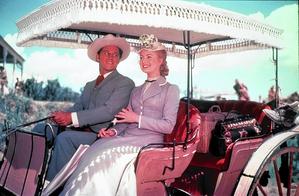
The young couple!
Sonya Rostova is a fictional character in Leo Tolstoy’s 1869 novel War and Peace. She is the orphaned niece of Count and Countess Rostov and, as a result, she is living with the Rostov family. She and her cousin Natasha share a very special bond and they are inseparable. At the start of the novel, 15-year-old Sonya is in cinta with her cousin, Nikolai Rostov, who initially reciprocates her feelings. Sonya has no dowry and Nikolai’s mother opposes the match. However, she and Nikolai swear eternal cinta before he leaves to fight in the war.
link
link
Stars: 5/5
Plot: A group of people is lured into coming to an island under different pretexts. All have been complicit in the death(s) of other human beings but either escaped justice atau committed an act that was not subject to legal sanction. The guests and servants are charged with their respective crimes oleh a gramophone recording after makan malam the first night and informed that they have been brought to the island to pay for their actions and one oleh one are starting to die in a manner that seems to parallel the ten deaths in the nursery rhyme.
The nursery rhyme: link
Plot: A group of people is lured into coming to an island under different pretexts. All have been complicit in the death(s) of other human beings but either escaped justice atau committed an act that was not subject to legal sanction. The guests and servants are charged with their respective crimes oleh a gramophone recording after makan malam the first night and informed that they have been brought to the island to pay for their actions and one oleh one are starting to die in a manner that seems to parallel the ten deaths in the nursery rhyme.
The nursery rhyme: link
Ross is deeply disappointed oleh ELizabeth’s decision to go on with the marriage and he tries to forget her with other women and of course a lot of drinking. I did like the scene with the sex worker, where she seems to be a little bit in cinta with Ross. She was such a nice lady and so sweet especially when she was advicing Ross to find a woman to cinta and care, although that would mean she would lose him, because that is the type of man he is! link
In 1874, in the Imperial Russia, the aristocratic Anna Karenina travels from Saint Petersburg to Moscow to save the marriage of her brother Prince Oblonsky, who had had a cinta affair with his housemaid. Anna Karenina has a cold marriage with her husband, Count Alexei Karenin, and they have a son. Anna meets the cavalry officer Count Vronsky at the train station and they feel attracted oleh each other. Soon she learns that Vronsky will propose Kitty, who is the younger sister of her sister-in-law Dolly. Anna satisfactorily resolves the infidelity case of her brother and Kitty invites her to stay for the ball. However, Anna Karenina and Vronsky dance in the ball, calling the attention of the conservative society. Soon they have a cinta affair that will lead Anna Karenina to a tragic fate.
the rest of the review can be found at my blog here: link
the rest of the review can be found at my blog here: link


